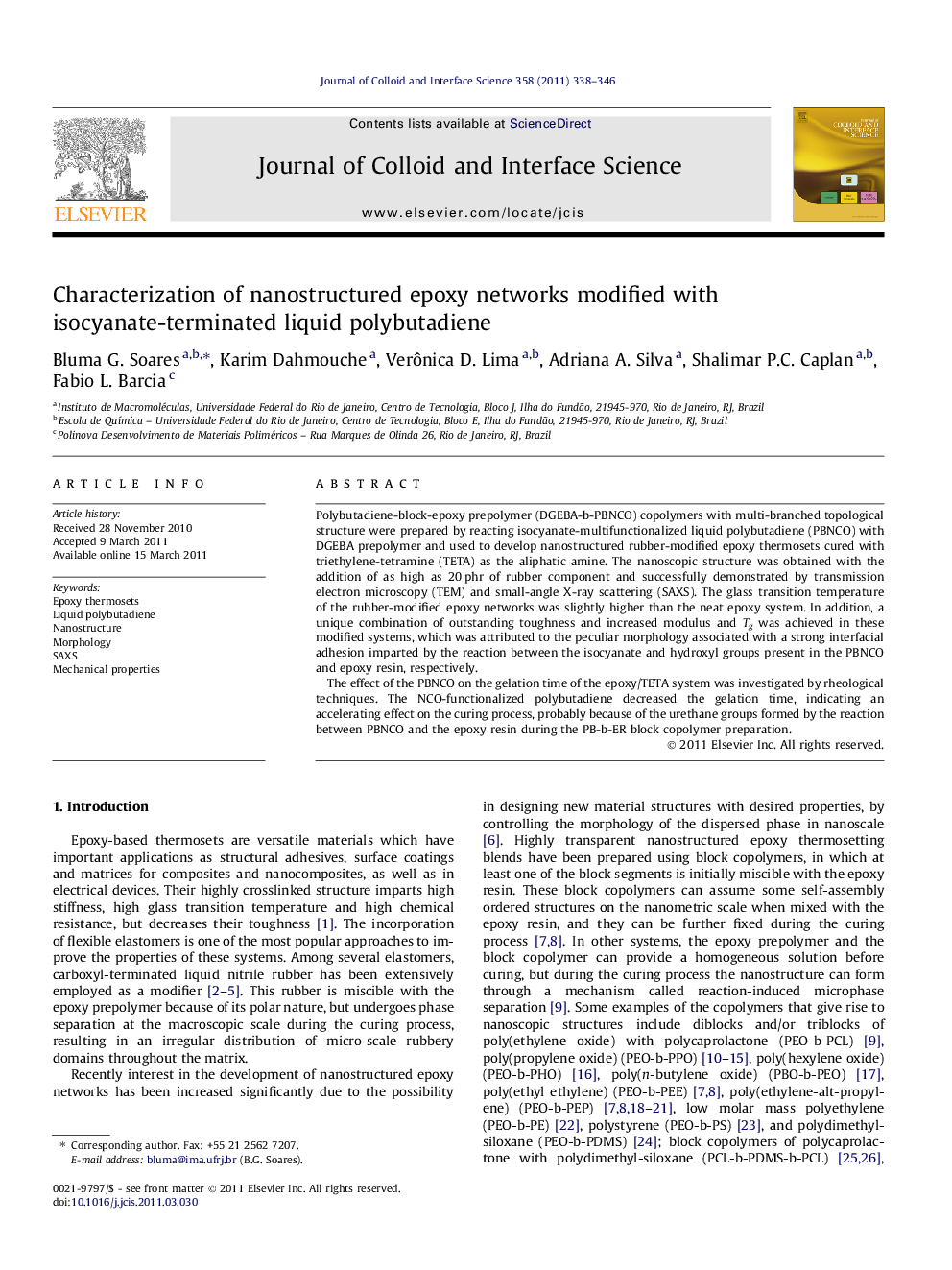| Article ID | Journal | Published Year | Pages | File Type |
|---|---|---|---|---|
| 608580 | Journal of Colloid and Interface Science | 2011 | 9 Pages |
Polybutadiene-block-epoxy prepolymer (DGEBA-b-PBNCO) copolymers with multi-branched topological structure were prepared by reacting isocyanate-multifunctionalized liquid polybutadiene (PBNCO) with DGEBA prepolymer and used to develop nanostructured rubber-modified epoxy thermosets cured with triethylene-tetramine (TETA) as the aliphatic amine. The nanoscopic structure was obtained with the addition of as high as 20 phr of rubber component and successfully demonstrated by transmission electron microscopy (TEM) and small-angle X-ray scattering (SAXS). The glass transition temperature of the rubber-modified epoxy networks was slightly higher than the neat epoxy system. In addition, a unique combination of outstanding toughness and increased modulus and Tg was achieved in these modified systems, which was attributed to the peculiar morphology associated with a strong interfacial adhesion imparted by the reaction between the isocyanate and hydroxyl groups present in the PBNCO and epoxy resin, respectively.The effect of the PBNCO on the gelation time of the epoxy/TETA system was investigated by rheological techniques. The NCO-functionalized polybutadiene decreased the gelation time, indicating an accelerating effect on the curing process, probably because of the urethane groups formed by the reaction between PBNCO and the epoxy resin during the PB-b-ER block copolymer preparation.
Graphical abstractNanostructured and toughened epoxy - aliphatic amine networks were successfully obtained by blending isocyanate-functionalized liquid polybutadiene.Figure optionsDownload full-size imageDownload high-quality image (94 K)Download as PowerPoint slideHighlights► Nanoscopic structure of epoxy network modified with polybutadiene was achieved. ► Functionalization of polybutadiene with isocianate provides a good interfacial adhesion between the phases. ► Transparent epoxy networks with outstanding impact resistance was obtained. ► The nanostructure was confirmed by SAXS and by TEM.
